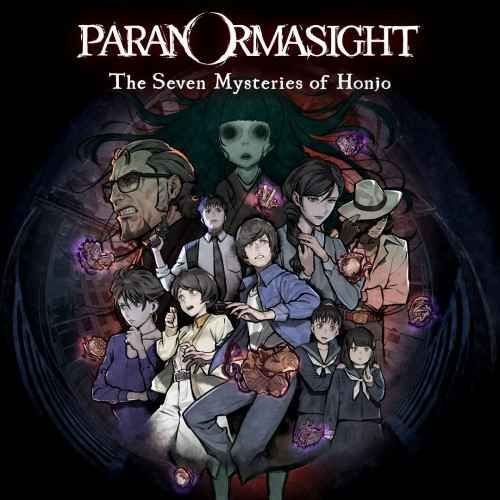Paranormasight: The Seven Mysteries of Honjo Review
Paranormasight: The Seven Mysteries of Honjo is a ridiculously titled visual novel, developed by Square Enix. It was only announced a few weeks ago, and is already getting released March 8 for Steam, and March 9 for Switch. It’s a throwback to 90s PC point and click adventure games, with a bizarre and compelling narrative.
Paranormasight: The Seven Mysteries of Honjo has the kind of mystery plot that’s much more fun to experience with less knowledge going in. For the sake of this review, I’ll just give the set up. The game begins with a masked narrator, who asks the player their name, and questions what they would choose to do if they had the option to bring someone back from the dead. The narrator tells the player that there will be several story protagonists, and introduces the first one. An old TV set turns on featuring a news report that shows the body of the protagonist the narrator just introduced has been found. The narrator quickly tells the player to forget what they just saw, and the point-of-view shifts to the soon-to-be deceased first protagonist.
More Than Seven Mysteries
The Seven Mysteries of Honjo are investigated by these protagonists. There are actually more than seven of them, as they are real-life Japanese folk tales. Paranormasight: The Seven Mysteries of Honjo is a fictional story, but makes an effort to base the plot and setting in the real-life Honjo region. All the environments are painstakingly detailed to match reality. The game provides a kind of virtual vacation to Japan, similar to the Yakuza franchise.
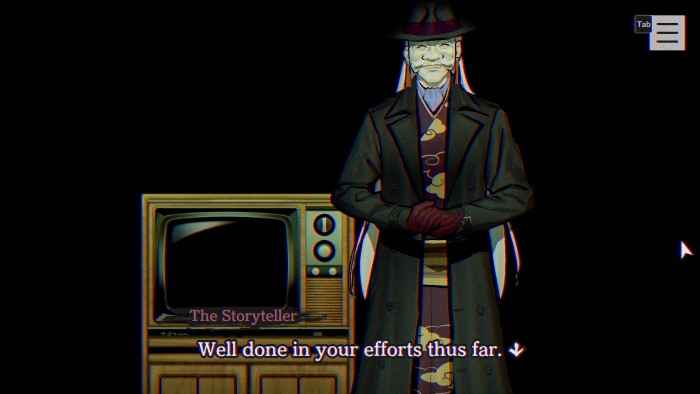
The visuals involve a lot of 2D illustration. They’re good, but the visuals differentiate themselves from other anime-styled experiences by juxtaposing the character drawings with real environments. Some sections of the game involve scanning the environment for clues, and these have an interesting curvature effect. This gives the flat art the feel of a panoramic photograph. The effect is pretty visually pleasing, and really adds a unique flair to the game’s visuals.
Point-and-Click Visual Novel
Paranormasight: The Seven Mysteries of Honjo is a Japanese-style visual novel at its core. There are multiple narrators and branching paths. The plot is unique and is really well-served by the game’s storytelling format. There’s a lot of text to read, and not a ton of gameplay. The gameplay is based on 90s PC point-and-click adventure games. The pixel hunt sections for example, have no modern quality of life updates. They don’t require ludicrous precision, but they have the “What do I need to freaking click-on to just move this section forward!?” problem. This will be a fun throwback for some, but will be annoying for most.
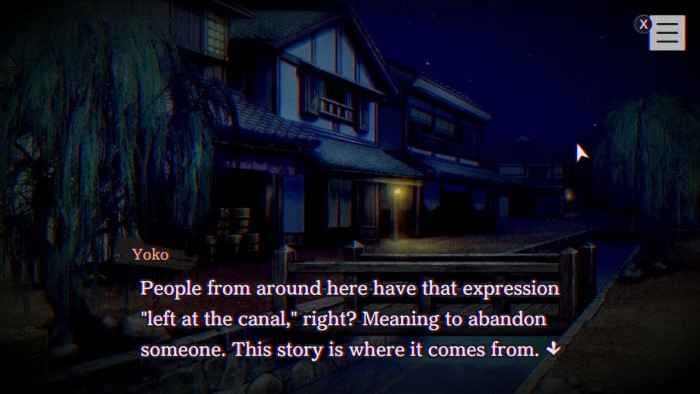
Unfortunately, the issues with the gameplay run deeper than just the nature of the point-and-click format. For example, during the pixel hunt sections, a check mark appears beside the name of something, if the player already clicked on it. Sometimes, if the player clicks on something, it will remove the check mark from something else. This indicates that the player needs to click that previously clicked-on something again. But the game does not tell the player this, and the only way to know is to hover over something the player has already clicked on. This mechanic made me have to check every single thing every time I found something new.
Exposition Heavy
This might be a good time to mention some issues with the writing in Paranormasight: The Seven Mysteries of Honjo. The dialogue can be too exposition heavy. This is common in Japanese visual novels. But sometimes the writing doesn’t translate concisely. Things are explained and re-explained that don’t need to be. The narrator at the beginning of the game explains to the player what autosave is, but the game doesn’t tell the player how several important, unique mechanics work. There were also some spelling and grammar mistakes.
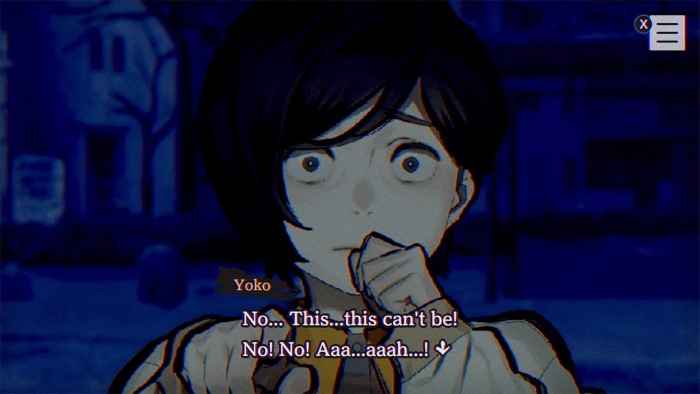
Paranormasight: The Seven Mysteries of Honjo was clearly made as a PC title, like its inspirations. And unfortunately, not much effort was put into porting it to the Switch. The game interface uses a mouse cursor in menus. Having a floating cursor works well in pixel hunt gameplay, but not when navigating menus with a controller. The cursor is also way too sensitive, and it was almost impossible to use some menu functions that required precise clicking. There aren’t any options to change the cursor sensitivity. It’s a bit better on a pro controller, than with the Joy-Cons, but still not precise enough. I had a really hard time with this at first, and kind of assumed I would adjust to it eventually, but I never did. The more I had to navigate menus, the more shocking and frustrating this problem became.
Just Fix the Damn Game
There are lots of annoying interface aspects to Paranormasight: The Seven Mysteries of Honjo. For example, if the player is talking to another character, and that character has several dialogue options, the game won’t return the player to the dialogue options. The character will talk, and the player will be dumped out of the conversation. Then the player has to move the cursor, select the character again, and choose the next dialogue option they wanted. This is basic quality of life programming. There are NES games with simpler dialogue navigation.
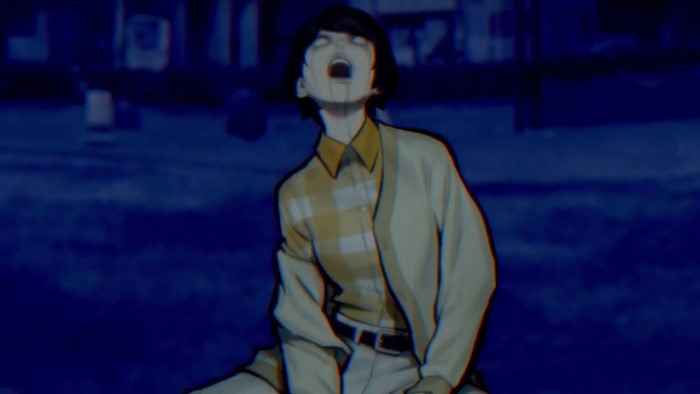
The Switch version of Paranormasight: The Seven Mysteries of Honjo is awful. It’s not ready to be played right now, because the menu navigation is straight-up broken. The game needs a patch with cursor sensitivity options at the very minimum, but even that fix would still make for a lazy port, that isn’t console ready. The story of Paranormasight: The Seven Mysteries of Honjo is captivating, and the throwback point-and-click adventure gameplay will be a treat for some. But the game needs more time and effort to be an enjoyable experience.
***Nintendo Switch code provided by the publisher***
The Good
Gripping story
Unique narrative presentation
Functions as a Japanese virtual vacation
The Bad
Unadapted PC interface on Switch
Unchangeable/overly sensitive cursor
Point-and-click can be frustrating
